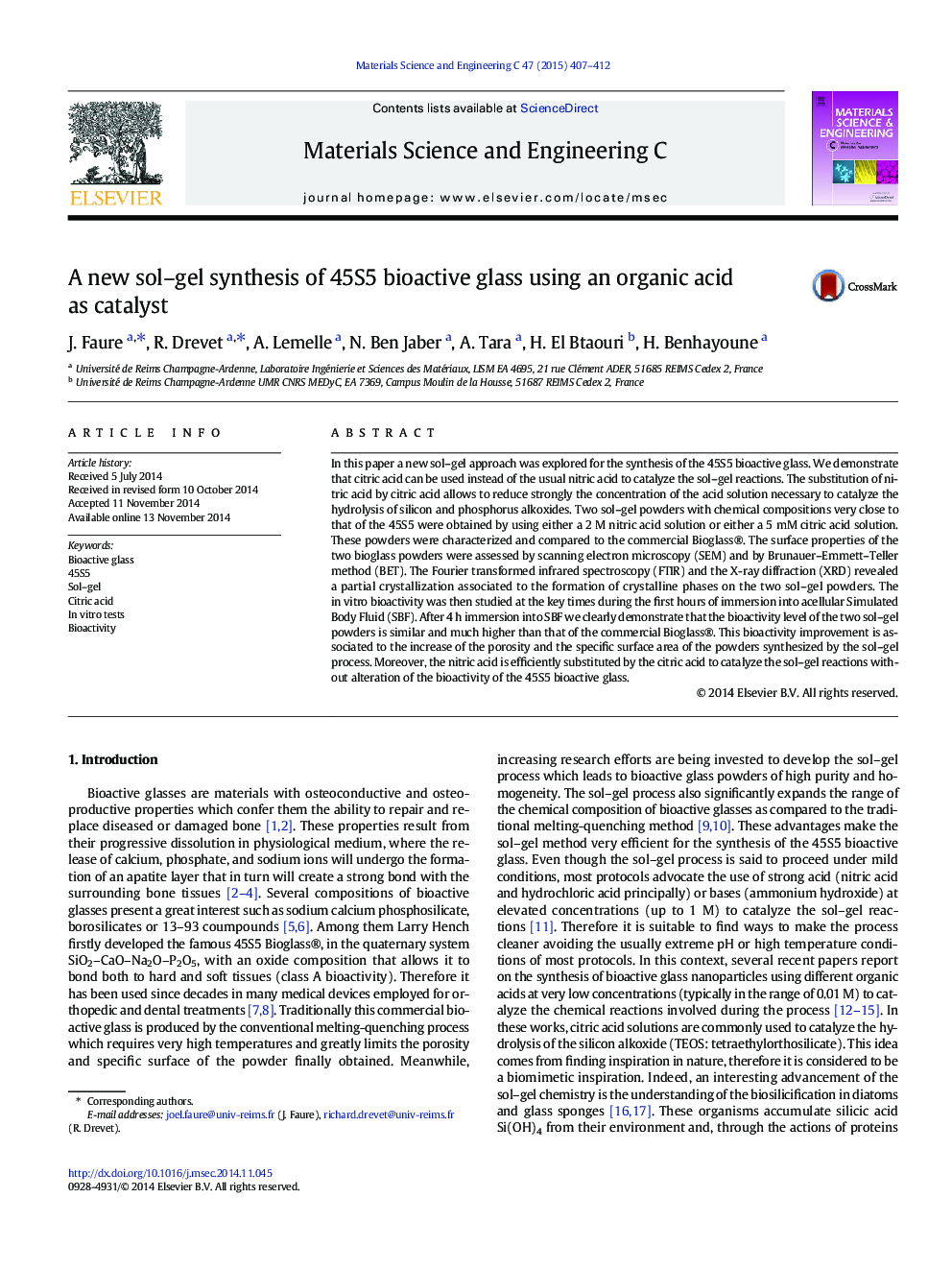| Article ID | Journal | Published Year | Pages | File Type |
|---|---|---|---|---|
| 1428417 | Materials Science and Engineering: C | 2015 | 6 Pages |
•Citric acid is employed as a catalyzer of the sol–gel process.•This catalyzer is used at a very low concentration for the hydrolysis reaction.•The chemical composition of the bioglass synthesized by the sol–gel process is optimized.•The properties of two sol–gel bioglasses are compared with those of the commercial bioglass®.
In this paper a new sol–gel approach was explored for the synthesis of the 45S5 bioactive glass. We demonstrate that citric acid can be used instead of the usual nitric acid to catalyze the sol–gel reactions. The substitution of nitric acid by citric acid allows to reduce strongly the concentration of the acid solution necessary to catalyze the hydrolysis of silicon and phosphorus alkoxides. Two sol–gel powders with chemical compositions very close to that of the 45S5 were obtained by using either a 2 M nitric acid solution or either a 5 mM citric acid solution. These powders were characterized and compared to the commercial Bioglass®. The surface properties of the two bioglass powders were assessed by scanning electron microscopy (SEM) and by Brunauer–Emmett–Teller method (BET). The Fourier transformed infrared spectroscopy (FTIR) and the X-ray diffraction (XRD) revealed a partial crystallization associated to the formation of crystalline phases on the two sol–gel powders. The in vitro bioactivity was then studied at the key times during the first hours of immersion into acellular Simulated Body Fluid (SBF). After 4 h immersion into SBF we clearly demonstrate that the bioactivity level of the two sol–gel powders is similar and much higher than that of the commercial Bioglass®. This bioactivity improvement is associated to the increase of the porosity and the specific surface area of the powders synthesized by the sol–gel process. Moreover, the nitric acid is efficiently substituted by the citric acid to catalyze the sol–gel reactions without alteration of the bioactivity of the 45S5 bioactive glass.
